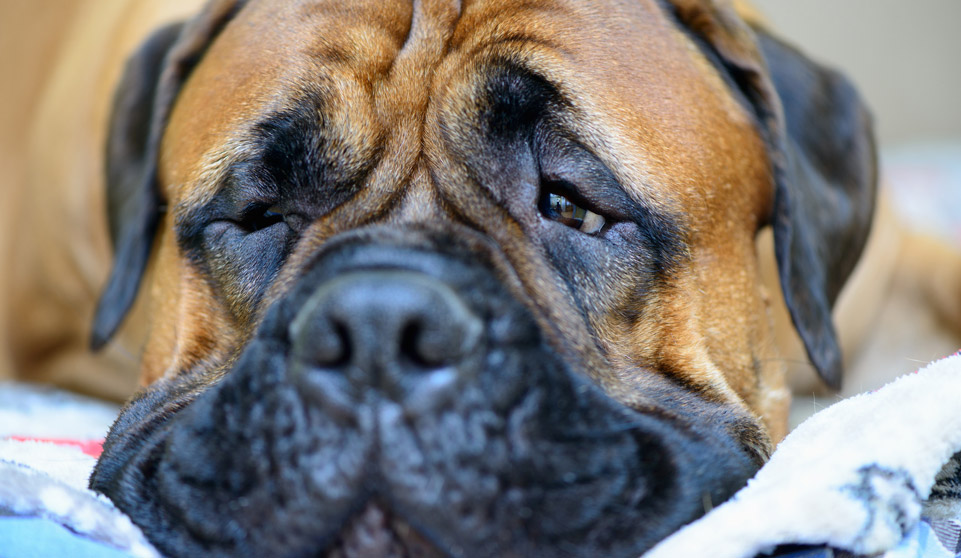Bullmastiff Information

History
The Bullmastiff dates back to the 19th century and originated in Britain. They are a cross between the Mastiff and the Bulldog breeds and were used by English gamekeepers in to guard estates.
They were officially recognised by the English Kennel Club in 1924 and by the American Kennel Club in 1933.
Characteristics
- Gentle Giant
- Powerful
- Courageous
- Loyal
- Docile
Bullmastiff Temperament & Size
These large dogs have a heavy, solid bone structure and have a smooth short coat that can be seen in brindle, fawn or red.
Although these dogs are bred as guard dogs they are very gentle, loyal and affectionate companions. They are laid back and generally get on well with other dogs.
They tend to be a messy with eating i.e. they can often be seen drooling and dropping food.
Bullmastiff Life Span & Health Problems
Average lifespan is 8- 10 years.Common Illnesses include;
- Hip and Elbow Dysplasia – Genetic conditions that cause abnormal development of the elbow and hip joints in young dogs. This can lead to early onset degenerative joint disease.
- Osteochondosis dissecans (OCD) – Developmental disorder where flaps of cartilage run against tissue causing irritation, pain, lameness and eventual degenerative joint disease. If severe enough, this can require surgery.
- Bloat (Gastric Dilatation Volvulus, GDV) – Twisting of the stomach resulting in rapid swelling of the abdomen causing pain and eventual death if not treated.
- Panosteitis – Excessive bone production in long bones of young dogs resulting in shifting lameness.
- Hypothyroidism – Underactive thyroid gland causing obesity, lethargy, ear infections and skin problems.
- Cancer ; most likely osteosarcoma (cancer of the bone), mast cell tumours and lymphosarcoma (cancer of the lymphatic system)
- Progressive Retinal Atrophy (PRA) – Progressive degeneration of the retina eventually causing blindness.
